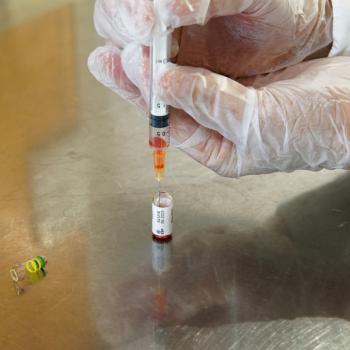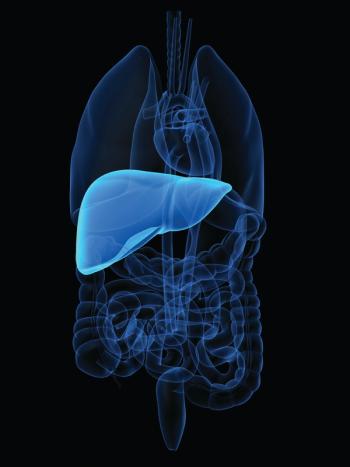
- ONCOLOGY Vol 9 No 7
- Volume 9
- Issue 7
Commentary (Nag): High-Dose-Rate Intraoperative Radiation Therapy For Colorectal Cancer
In this issue, Harrison et al give the rationale for intraoperative high-dose-rate brachytherapy (IOHDR) and provide an excellent summary of the Memorial Sloan-Kettering Cancer Center (MSKCC) experience with this treatment. Intraoperative high-dose-rate brachytherapy is used in very few centers [1-4], and its worldwide use has been recently summarized [5,6]. Although our experience with IOHDR at Ohio State University parallels that of Harrison et al in some respects, it differs in others. I will highlight these differences to give readers a more balanced view of IOHDR.
In this issue, Harrison et al give the rationale for intraoperative high-dose-rate brachytherapy (IOHDR) and provide an excellent summary of the Memorial Sloan-Kettering Cancer Center (MSKCC) experience with this treatment. Intraoperative high-dose-rate brachytherapy is used in very few centers [1-4], and its worldwide use has been recently summarized [5,6]. Although our experience with IOHDR at Ohio State University parallels that of Harrison et al in some respects, it differs in others. I will highlight these differences to give readers a more balanced view of IOHDR.
We started our first IOHDR treatment in March 1992, just 8 months before the first treatment at Sloan-Kettering. While MSKCC has an intraoperative suite in the Radiation Oncology Department, Ohio State has a dedicated intraoperative facility in a shielded surgical suite that has both an electron beam (EB)-producing linear accelerator (Siemens ME) and an HDR micro-Selectron that we transport from the Radiation Oncology Department to the operating room suite for the treatment. This enables us to give optimal intraoperative treatments: electron beam for tumor beds accessible to the electron beam cone and IOHDR for inaccessible sites.
Applicators
Sloan-Kettering uses the Harrison-Anderson-Mick (HAM) applicator. We employ several types and sizes of applicators suitable for various sites. For flat tumor beds, we use a rigid applicator made of Delrin (Delrin is a rigid plastic material cut into 1 cm thick slabs). For curved surfaces, we use either applicators ( 1 cm thick) made of Silastic supermold or flexible foam. The Silastic supermold is similar to "super flab" (the material composing the HAM applicator), except that it is easily sterilized. Super flab requires prolonged and intricate sterilization procedures because it is not a synthetic material (unlike the Silastic supermold) [5].
IOEBRT vs IOHDR
We believe that a comprehensive intraoperative program should have both intraoperative electron-beam radiotherapy (IOEBRT) and intraoperative high-dose rate brachytherapy facilities available to treat all sites [7,8]. We prefer to use IOEBRT for sites that are accessible to the electron beam cone because both the treatment and setup times are shorter. Also, IOEBRT is more convenient for the treatment of larger tumor beds (up to 12 cm in diameter). However, since the beam travels only in a straight line, and the electron cone has a finite diameter, we have found that IOEBRT is unsuitable for the treatment of sites deep in the inferior pelvis, subpubic locations, some lateral pelvic side walls, anterior abdominal walls, subdiaphragmatic areas, the anterior chest wall, and narrow cavities, such as the ethmoid sinus. Therefore, we use IOHDR at these locations. The basic differences between intraoperative electron-beam radiation therapy and intraoperative high-dose rate brachytherapy are summarized in Table 1.
The distribution characteristics for IOHDR and IOEBRT also differ. Table 2 shows the percentage depth dose from IOHDR and IOEBRT. The dose is prescribed at 1 cm from the plane of catheters (0.5 cm from the applicator surface) for IOHDR, and at Dmax (Dmax is a radiotherapy term for maximum dose) for 6-MeV electrons for IOEBRT. The dose at the surface is higher for IOHDR than for IOEBRT, whereas the dose at depth (for example, at 2 cm) is higher for IOEBRT than for IOHDR. Since IOHDR gives a far greater surface dose, we use it to treat a microscopic tumor bed, but we prefer IOEBRT for the treatment of tumors more than 0.5 cm thick.
For intraoperative high-dose rate brachytherapy, the treatment time depends on the total area to be treated (and the activity of the source), because a single source is used to treat the tumor bed. The actual treatment time in the MSKCC experience varied from 19 to 83 minutes. Our IOHDR treatment time generally varies from 5 to 30 minutes, because we generally treat only small areas with IOHDR. Larger tumor beds (up to 12 cm in diameter) are generally treated with IOEBRT. Extremely large tumor beds probably are not suitable candidates for intraoperative treatments, except in rare cases.
Sites Treated
In our first 3 years of operation, we have performed 195 intraoperative procedures (122 IOEBRT, 73 IOHDR). Although we have performed 32 procedures in the pelvis, our experience has been predominantly in the head and neck area (Table 3). One interesting difference we have noticed in our recent analysis is that recurrent head and neck tumors respond very poorly in comparison to primary tumors. The difference in results between patients with primary and recurrent colorectal tumors in the Sloan-Kettering experience is less pronounced. I suspect, however, that the difference will become more marked as time passes, since their follow-up has been shorter.
Dosimetry
For primary cases, we use a slightly lower intraoperative dose (10 Gy) than that used at Sloan-Kettering (12 Gy). In addition, our external beam is generally given postoperatively rather than preoperatively. For recurrent cases, we use the same dose as we employ for microscopic disease (15 Gy). However, for gross residual disease, we use 20 Gy. Our early experience indicates that we may need to increase the dose in the recurrent cases.
Like the Sloan-Kettering investigators, we use preplanned dosimetry. However, we have elected to use equal dwell times rather than optimized treatment planning for the following reasons:
1) Since there is little time to perform intricate quality assurance checks, there is less chance for error using equal dwell times, since only one parameter must be checked.
2) Equal dwell times result in a higher dose to the center. We prefer that the center of the tumor bed get a slightly higher dose than the periphery, since the center usually has a higher tumor burden.
3) There are various methods of optimization, making comparison difficult in a multicenter trial. The use of equal dwell time simplifies comparison.
Radiobiologic Considerations of IOHDR
The linear quadratic model shows that a single 10-Gy dose of high-dose-rate brachytherapy is equivalent to a low-dose rate (LDR) brachytherapy dose of 18.7 Gy given at 0.5 cGy/h. Similarly, an IOHDR dose of 15 Gy is comparable1 to a low-dose-rate dose of 35 Gy (Table 4). Even modest amounts of tissue displacement produce marked dose reduction to normal tissues. For example, 2-, 3-, and 4-cm tissue displacements result in dose reductions of 80%, 87%, and 93%, respectively [1]. Similarly, the total dose reductions produced by 1 mm, 3 mm, and 6 mm of lead are 20%, 63%, and 85%, respectively (Table 5).
Conclusion
Intraoperative high-dose-rate brachytherapy is a recent addition to the radiation oncology armamentarium. Although IOHDR is currently being used in very few centers, its popularity is growing. This therapy is of special benefit in treating sites inaccessible to IOEBRT, or for use in centers that do not have IOEBRT available. However, for optimal intraoperative therapy, we believe both modalities should be available.
References:
1. Nag S, Orton C: Development of intraoperative high dose rate brachytherapy for treatment of resected tumor beds in anesthetized patients. Endocurieth Hypertherm Oncol 9:187-193, 1993.
2. Lukas P, Stepan R, Ries G, et al: A new modality for intraoperative radiation therapy with a high-dose-rate-afterloading unit. Radiology 181:251, 1991.
3. Nag S, Martin EW, Schuller DE, et al: High dose rate remote brachytherapy as an economic alternative to electron beam for intraoperative radiation therapy. Endocurieth Hypertherm Oncol 9:56, 1993.
4. Thomas DS, Nauta RJ, Rodgers JE, et al: Intraoperative high-dose rate interstitial irradiation of hepatic metastases from colorectal carcinoma: Results of a phase I-II trial. Cancer 71:1977-1981, 1993.
5. Nag S, Lukas P, Thomas DS, et al: Intraoperative high dose rate remote brachytherapy, in Nag S (ed): High Dose Rate Brachytherapy: A Textbook, pp 427-445. Armonk, New York, Futura Publishing, 1994.
6. Thomas DS, Dritshilo A: Interstitial high dose rate irradiation for hepatic tumors, in Nag S (ed): High Dose Rate Brachytherapy: A Textbook, pp 339-346. Armonk, New York, Futura Publishing, 1994.
7. Nag S, Mountain CJ, Bauer CJ, et al: Intraoperative radiation therapy of head and neck cancer by electron beam and high dose rate brachytherapy. (abstract). Hepato-Gastroenterology 41:7, 1994.
8. Gahbauer RA, Nag S, Kanellitsos C, et al: Optimized installation for intraoperative therapy including electron beam, remote high dose rate (HDR) brachytherapy, hyperthermia, and radioimmunoguided surgery, in Abe M, Takahashi M (eds): Intraoperative Radiation Therapy: Proceedings of the Third International Symposium on Intraoperative Radiation Therapy, pp 114-115, New York, Pergamon Press, 1991.
Articles in this issue
over 30 years ago
How One Company Decides When to Pay for Experimental Therapiesover 30 years ago
Smoking Cessation Guidelines Should Include Smokeless Tobaccoover 30 years ago
Radiolabeled-M195 Shows Promise in Myeloid Leukemiasover 30 years ago
Psychological Distress Can Be Predicted Early in Cancer Patientsover 30 years ago
New Test May Predict Course of AIDSover 30 years ago
Book Review: Surviving Childhood Cancer--A Guide for FamiliesNewsletter
Stay up to date on recent advances in the multidisciplinary approach to cancer.


















































































